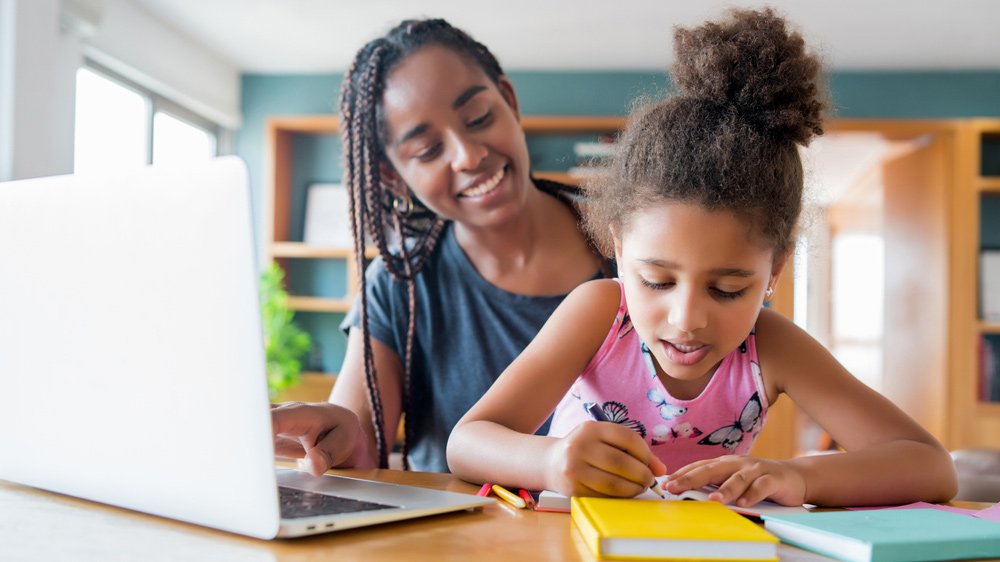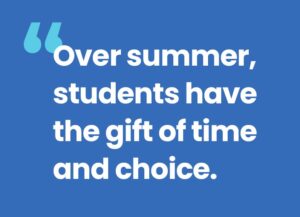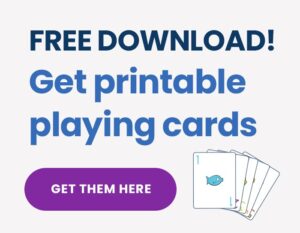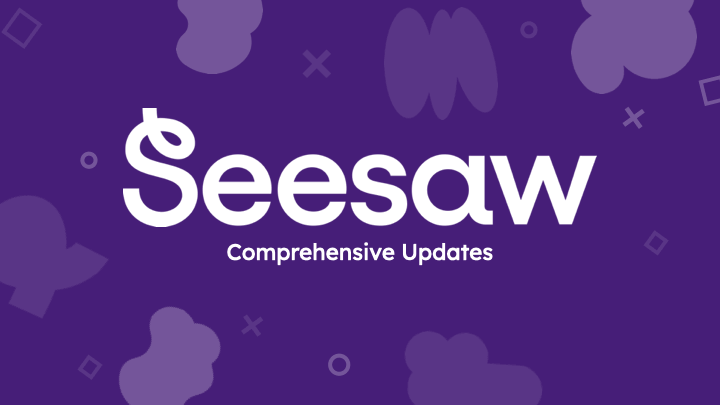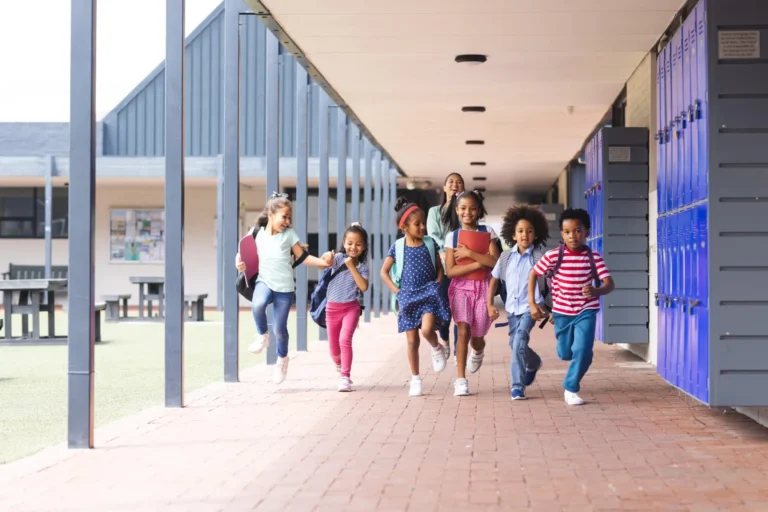When the last bell of the school year rings, students go home to a range of learning resources and opportunities. Educators often wonder, How do we support learning outside school walls?
One effective approach is to blend learning experiences into everyday life. The home is a rich, hands-on learning lab just waiting to be tapped! Leverage student interests, the home environment, and family members – and of course make it fun. You’ll have the kind of summer learning students and families can get excited about.
Read on for simple ways to create summer learning activities that are accessible, engaging, and support students to return from break ready for the year ahead.
LEVERAGE STUDENT INTERESTS
Over summer, students have the gift of time and choice. Without common classroom constraints, students can build reading, writing, STEAM, and social-emotional learning (SEL) skills while exploring interests and enjoying all that summer has to offer.
It starts with asking students, “What are you curious about?” As they go about their summer, students can keep a list of topics that interest them. For younger learners, an older family member or friend can help write down their ideas.
Then with age-appropriate supervision, students can research their chosen topic at the library, online, or by interviewing adults in their community.
The best part of learning something new is sharing it! Students can make a drawing, record a short documentary, create an informative poster, use recyclables to build a diorama, write a report, or simply talk about their topic.
Exploring interests in this way builds skills that are foundational for students of all ages, including oral language, research, reading, writing, and relationship building. Students also build background knowledge on a wide range of topics they can take with them into the next school year.
USE THE HOME ENVIRONMENT
The home offers a wealth of items that can be used to push student thinking forward in equitable and relevant ways. With this lens, everything around the house and neighborhood can be used for learning.
Here are just a few of the possibilities:
-
Family pictures and heirlooms become writing prompts. Students can record their memories, interview family members, or make up a story.
-
Clothing becomes costumes. Students can make up a play or act out a scene from a favorite book.
-
Recyclables become building supplies. Students can build a prototype of a new invention, recreate a scene from a book, or engineer an imaginative new building.
-
Kitchen supplies become math practice. Students can sort items, identify shapes, and practice counting, multiplying, dividing, and other operations.
-
The outdoors become a science lab. Students can create a field journal with drawings and descriptions of what they observe.
Intentionally integrating the home environment into summer learning activities promotes creativity and problem solving. Students and families discover that learning opportunities are all around them.
GET FAMILY MEMBERS INVOLVED
Inviting family members to participate in summer learning activities strengthens family relationships. It also fosters home-to-school connections that teachers can build upon when school is back in session. An effective way to involve family members is to uncover learning opportunities in everyday tasks.
When families are cooking, students can:
-
Practice reading the recipe and following directions
-
Reinforce fractions by measuring ingredients
-
Build scientific thinking skills by predicting and noticing what happens at each step
When families are folding laundry, students can:
-
Practice sorting and matching like objects
-
Create geometric shapes
-
Spell each item as they fold
When families are driving or traveling on public transportation, students can:
-
Generate questions about their surroundings
-
Talk about time and distance
-
Play any of the learning games in the next section
Reinforcing learning in day-to-day tasks makes learning relevant and provides critical opportunities for deliberate practice. These are skills that families can carry with them into the school year and beyond.
SUMMER LEARNING GAMES
Students are far more likely to practice skills over summer break when activities are fun! Here are three learning games families can play anywhere they go.
GAME #1
Math War 4 Ways: Use cards numbered 1-10 (Ace = 1). Deal cards evenly face down. Play until there are no more cards in the stack.
-
Simple War: Each player turns over one card. The highest card wins.
-
Addition War: Each player turns over two cards. The greatest sum wins.
-
Subtraction War: Each player turns over two cards. The greatest difference wins.
-
Multiplication War: Each player turns over two cards. The greatest product wins.
-
If it’s equal, it’s war! Place three cards face down and one face up. The highest card takes all. Play until there are no more cards in the stack.
GAME #2
Family Storytelling: Tell a story – real or made up – as a family. One family member tells the first part of a story. The next family member adds on. Keep taking turns until the story is finished.
GAME #3
20 Questions: One family member thinks of a person, place, or object. Players ask questions to learn more and guess what it is. Take turns being the thinker and guesser.
These are just a few of many games that require minimal materials and provide opportunities for students to practice academic skills anywhere they go. This summer, share any of these ideas with your families and support learning in everyday life. Keep academic skills sharp, engage families as partners, and set students up for success, all while keeping learning fun.
We’re here to make it even easier for support meaningful learning this summer.
Learn more about summer learning with Seesaw at seesaw.com/summer.
